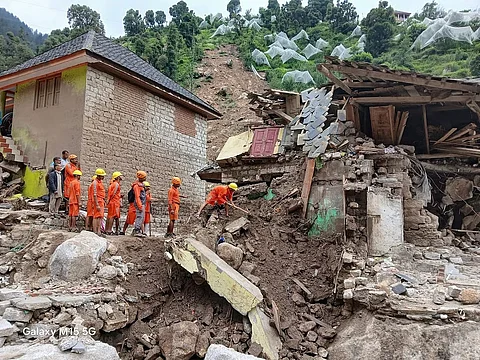

The Supreme Court of India has issued a stern warning over the environmental costs of the country’s aggressive push for renewable energy, calling Himachal Pradesh “a classic example of not knowing your own surroundings”.
The remarks came as the court dismissed a petition challenging a notification dated July 28, 2025, which declared the Sri Tara Mata Hills in Himachal Pradesh a “green area”. While disposing of the matter, the court directed that wider environmental issues be addressed through a public interest litigation, with the next hearing scheduled for August 25, 2025.
A bench comprising Justices JB Pardiwala and R Mahadevan observed that Himachal Pradesh, often referred to as India’s “power state” due to its immense hydropower potential — was now suffering from its own model of development. While hydropower may offer a renewable and low-carbon alternative to fossil fuels, the environmental toll of building vast dams, reservoirs and tunnels is far from negligible, the court observed in its ruling.
Nature definitely is annoyed with the activities going on in the state of Himachal Pradesh
Supreme Court of India
The Supreme Court has warned that Himachal Pradesh is paying a steep environmental price for its unchecked hydropower and infrastructure development.
The state’s fragile ecology is being damaged by tunnel blasting, river diversion, unscientific slope-cutting, and rapid tourism growth.
The Court observed that the Sutlej river has been reduced to a trickle and natural disasters are intensifying due to poor environmental planning.
It directed the matter to be registered as a public interest litigation, with the next hearing set for August 25, 2025.
Himachal Pradesh plays a crucial role in India’s renewable energy targets, especially through its extensive hydropower network built along major rivers such as the Beas, Sutlej, Chenab, Ravi and Yamuna. But the court noted that the ecological cost of this energy transition was escalating sharply.
“Blasting for tunnels destabilises slopes, river diversions affect aquatic ecosystems, and the impoundment of water changes sediment flow. In addition, the cumulative impact of multiple projects in the very same river basin is often overlooked in environmental assessments,” the court pointed out.
Further, communities living in the shadow of these hydroelectric projects often face a grim reality: dwindling water supplies, frequent landslides and cracks splitting through the walls of their homes, the order pointed out. “Apparently, the minimum outflow of water, as is contractually mandated, is not being adhered to by the project proponents, resulting in the vanishing of aquatic life. In fact, the mighty trans Himalayan river Sutlej stands reduced to a rivulet,” the apex court highlighted.
The bench expressed alarm over the growing frequency and intensity of natural disasters in Himachal Pradesh. It pointed to the devastating monsoon seasons of 2023 and 2025, which saw widespread destruction in districts such as Kullu, Mandi, Shimla and Chamba.
There are numerous environmental challenges, both direct and indirect, facing the state, the order said. Given its fragile mountainous geography, it is highly vulnerable to earthquakes, flash floods and landslides.
Despite these risks, the state has emerged as a major hydroelectric hub, with large-scale projects like Bhakra and Nathpa Jhakri, among others, set up on key rivers. With both public and private sector involvement, the state plays a significant role in contributing to India’s renewable energy capacity.
“But unrelenting building, tunnel, and road construction, frequently done without sufficient environmental planning, has increased the area’s susceptibility to natural disasters and the effects of climate change,” the bench underlines
The court further criticised unscientific slope-cutting practices, expansion of four-lane highways and ropeways, and the surge in tourism, saying these developments had not only strained natural resources but also triggered ecological imbalances.
Tourism, especially religious and nature-based, remains a vital economic contributor for Himachal Pradesh. However, the court warned that unchecked tourism growth—coupled with traffic congestion, excessive water use, and waste generation—was accelerating environmental degradation and contributing to water scarcity.
The time has come for the State of Himachal Pradesh to pay heed to what we have said and take necessary action in the right direction as early as possible. It is also the responsibility of the Union of India to ensure that the ecological imbalance in the state is not further aggravated and natural disasters do not occur.
Supreme Court of India
In a strongly worded closing, the bench underscored that neither the state nor the union government could prioritise revenue at the expense of the environment.
The registry has been directed to treat the matter as a public interest litigation.